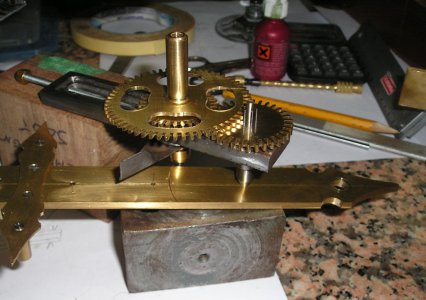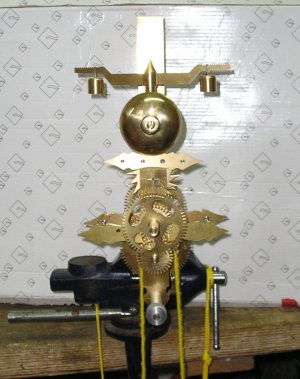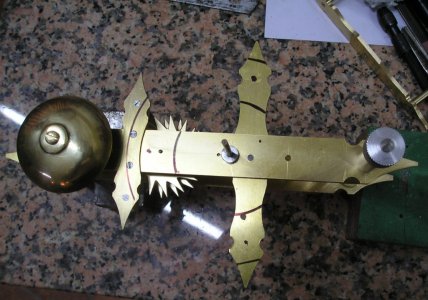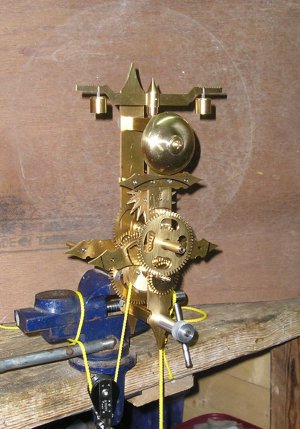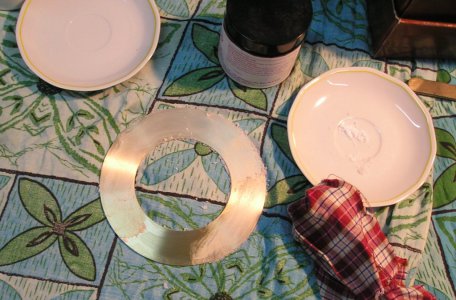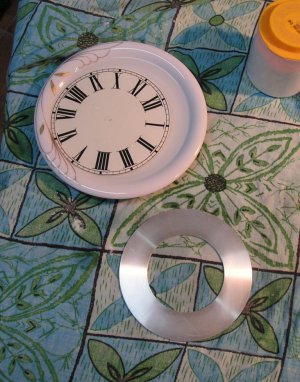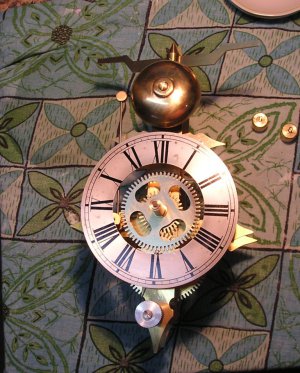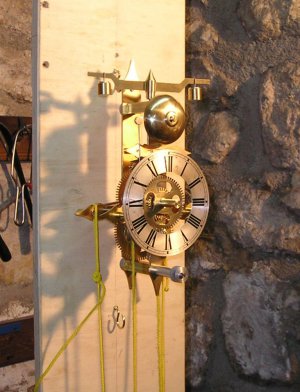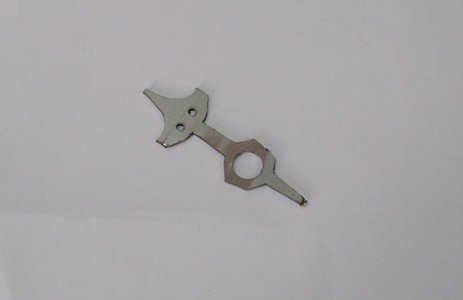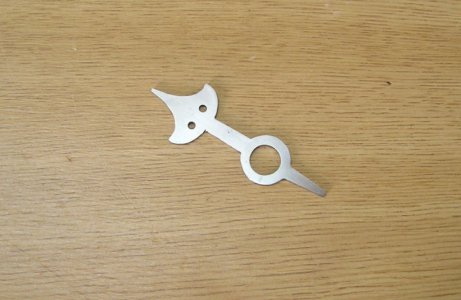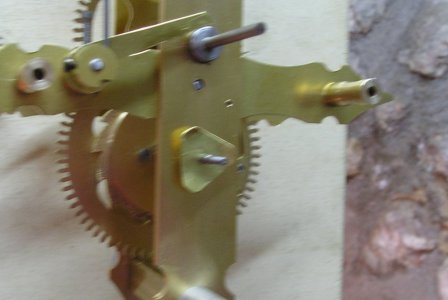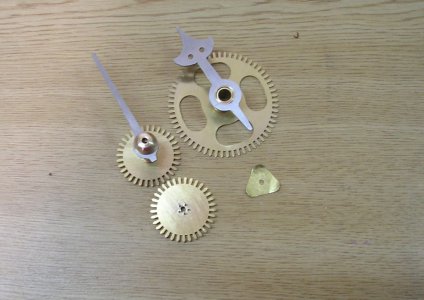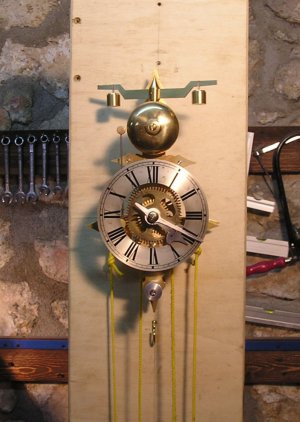Thanks for the comments , i am glad you are enjoying it.
The next step is to plant the position of the gears.
the gears are set up in the depthing tool and adjusted to get a smooth action.
One point of the tool is located in the existing hole,
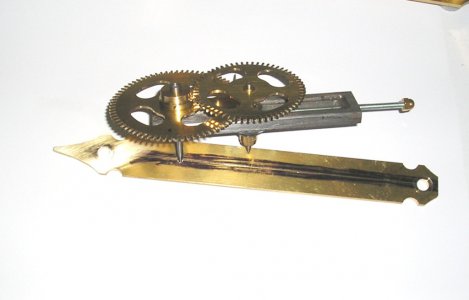
and an arc struck across the centre line with the other point of the tool.
The mark is then enlarged.
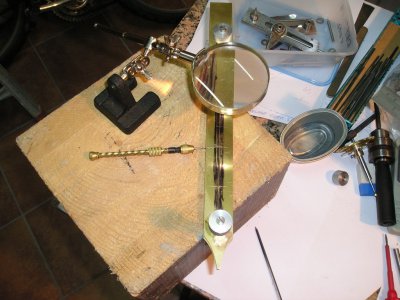
A drill is selected , smaller than the pivot size, and also a taperd broach .
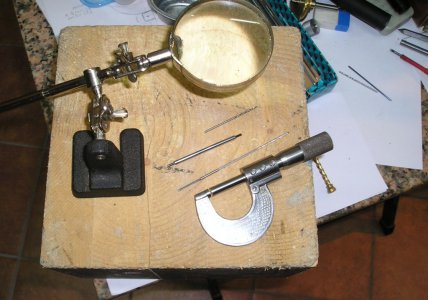
After drilling the hole with the two plates pined together, the holes are opened up from both sides until the pivot just fits.
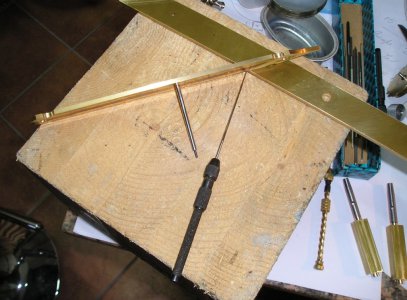
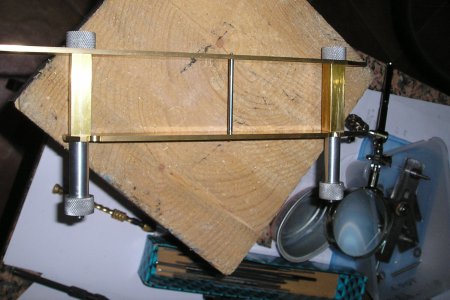
When all the pivots are finished the gears are assembled for a trial.
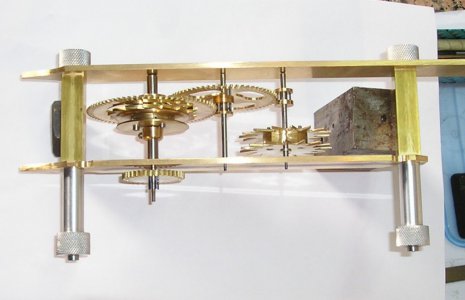
Assemble the escapement and the movement can be run on test. Easy to say, but can take a long time to get it right.
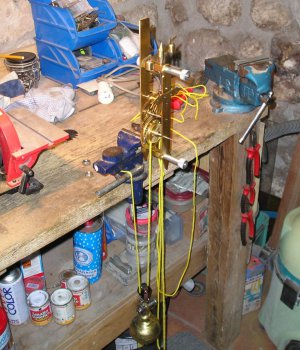
With the movement running we can turn to the motion work, the gears are mounted on pipes that carry the hands,
These have been made over length so I can find room for the striking trip pin, and get the position of the dial. before triming them to length for the hands.
This is what happens when you build without plans!!
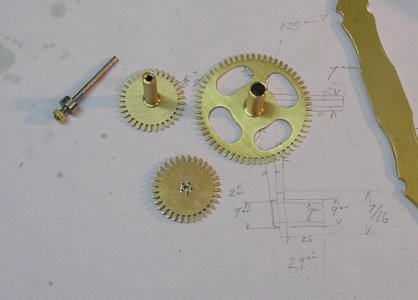
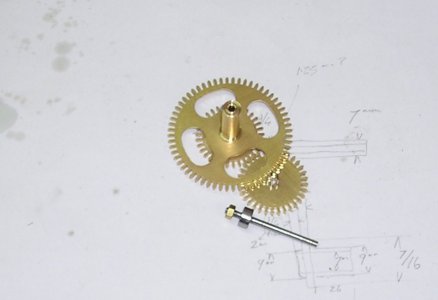
Brian.




















